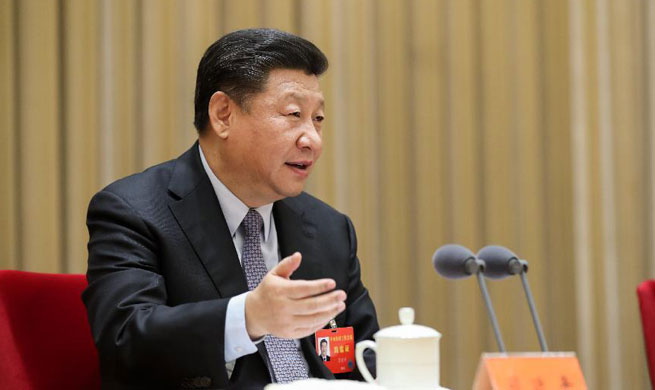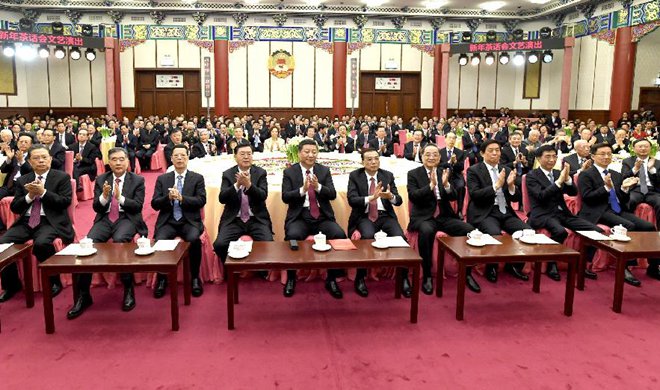by Luis Rojas
MEXICO CITY, Dec. 29 (Xinhua) -- After two years of negative growth and four years of a slowdown, Latin America's economy expanded in 2017 and experts predict the upward trend will hold in 2018.
Regional gross domestic product (GDP) shrank 1.2 percent in 2016, but financial institutions, such as Banco Bilbao Vizcaya Argentaria, are forecasting a 1.1-percent expansion in 2017 and a 1.6-percent growth the year after.
Barcelona-based FocusEconomics, which provides economic forecasts and analyses for 127 countries, has a much more optimistic take on future regional growth, expecting a 2.4-percent expansion in GDP in 2018 and 2.7 percent in 2019.
The firm said in its latest report that it expected "the recovery of investor confidence in the region" to substantially spur private consumption and investment next year.
Raw material exports "are also going to benefit from higher global prices," the firm added.
China played a key role in Latin America's economic recovery in 2017, with regional exports to the Asian giant -- its most dynamic market -- increasing 30 percent, according to the Inter-American Development Bank.
Louis Kuijs, head of Asia economics at Oxford Economics, estimated that even if global trade were to see a slight slowdown in 2018, regional growth will remain robust thanks to the synchronous expansion of the major economies, such as China.
A strong U.S. dollar also helped spur Latin American economies, many of which are leading exporters to the United States, above all Argentina, Brazil, Chile, Colombia, Mexico and Peru, which credit-rating agency Standard & Poor's (S&P) calls the "Latam-6."
The super cycle in commodities and its associated cycle of a depreciated dollar constituted an unprecedented push for the region, said Oxford Economics.
Oxford Economics, a global advisory firm associated with Oxford University, said it believes 2017 marked the beginning of a process of "convergence" towards a less frenetic but more sustained growth in the region.
Pedro Tuesta, an economist from Continuum Economics, a leading independent economic research firm, believes that as 2018 nears, regional growth will be in step with global economic growth for the first time in several years.
CHALLENGES AHEAD
However, obstacles to growth remain, including continued volatility in global financial markets and, more regionally, upcoming elections in several Latin American countries that could delay the execution of major infrastructure projects.
Tuesta warned that next year's elections in some of Latin America's largest economies, such as Brazil and Mexico, could impact regional economic performance.
"The biggest problems could be political changes that affect economic policy, and that is more complex in Latin America," Tuesta told Xinhua from Washington.
"The largest countries may see political changes due to electoral outcomes," said Tuesta.
Latin America's largest economy, Brazil, could see a 2.2-percent economic growth, after registering a 0.8-percent expansion in 2017, Tuesta said.
Although the Brazilian economy has finally shown signs of recovery after "its worst recession in modern history," it faces many challenges ahead, and still needs to address certain macroeconomic imbalances, according to FocusEconomics.
Led by President Michel Temer, Brazil's government is eager to pass pension reforms through Congress, but postponed the vote until February 2018, sensing the time was still not right.
The window of opportunity for passing the country's economic reforms is fast closing, as next year's October elections near, FocusEconomics said.
As Latin America's second-largest economy, Mexico is struggling with two elements that generate uncertainty: the negotiations to modify the North American Free Trade Agreement (NAFTA) and presidential elections in July 2018.
The NAFTA talks could lead to an unexpected and negative outcome, though its potential impact would take time to register on Mexico's GDP.
While the rest of the region "is barely beginning" to see a recovery, Mexico could grow at a rate of 2.3 percent in 2017 and 2018, Oxford Economics said in a Dec. 22 report.
S&P is taking a more "cautious" approach, believing the recovery is still "fragile" in terms of domestic demand due to the specter of rising long-term interest rates, a disorderly correction in the price of assets in developed countries and the NAFTA negotiations.
As we move into 2018, despite the global recovery, Latin America still appears to be affected by a "relatively low growth compared to a decade ago," though Chile, Colombia and Brazil are expected to have an acceleration, S&P said in its recent report.
The regional elections will show how these countries respond during periods of uncertainty and especially "how they manage their public finances," the rating agency said. Enditem

















